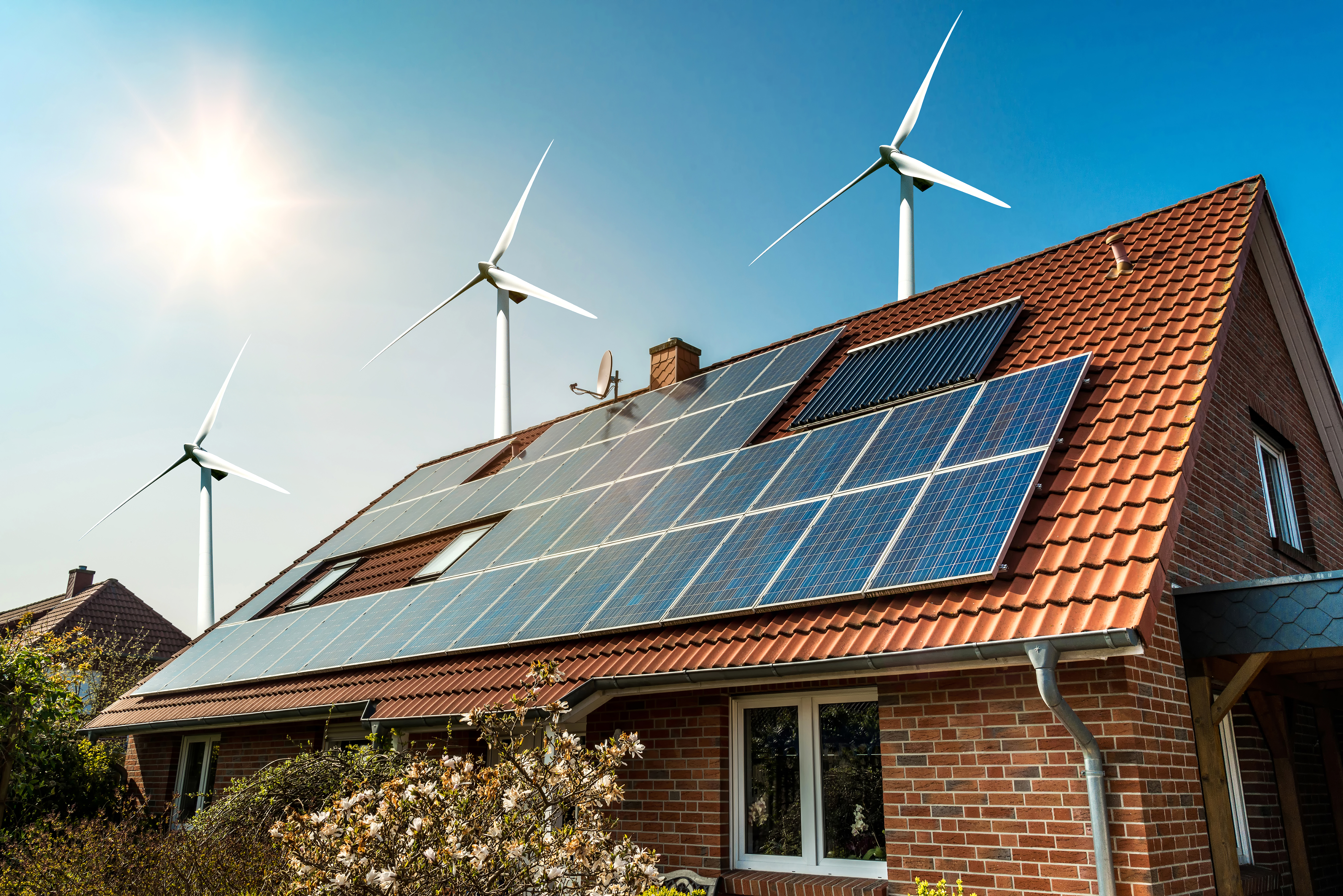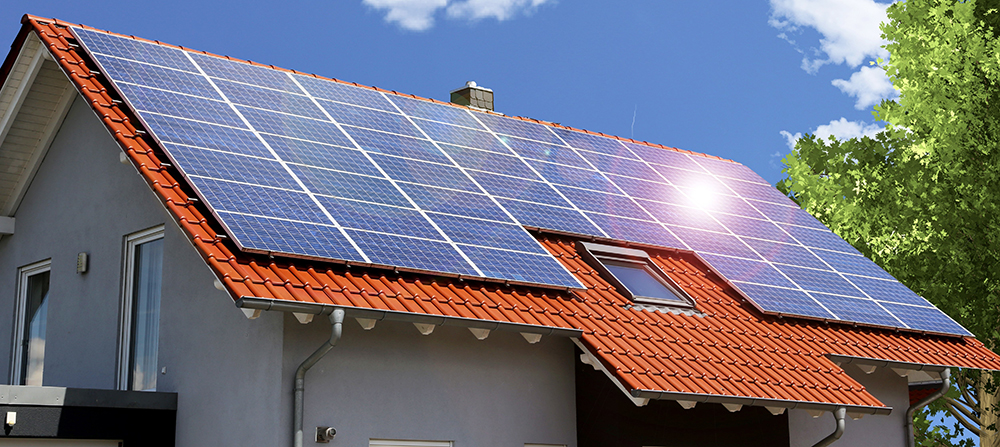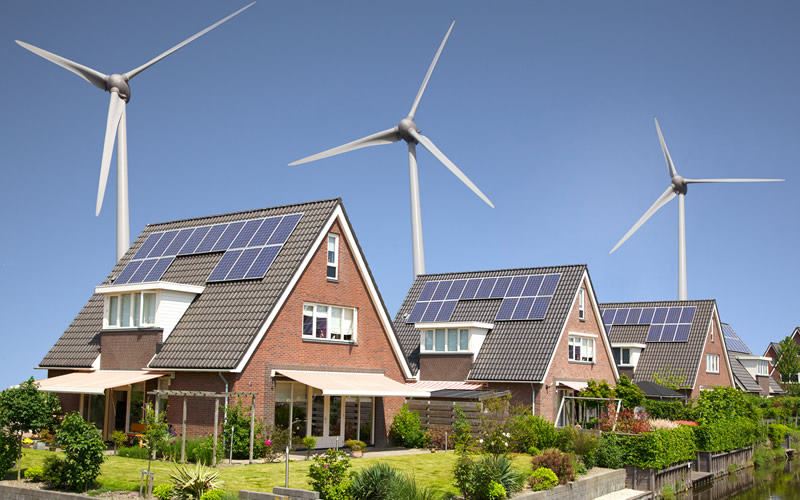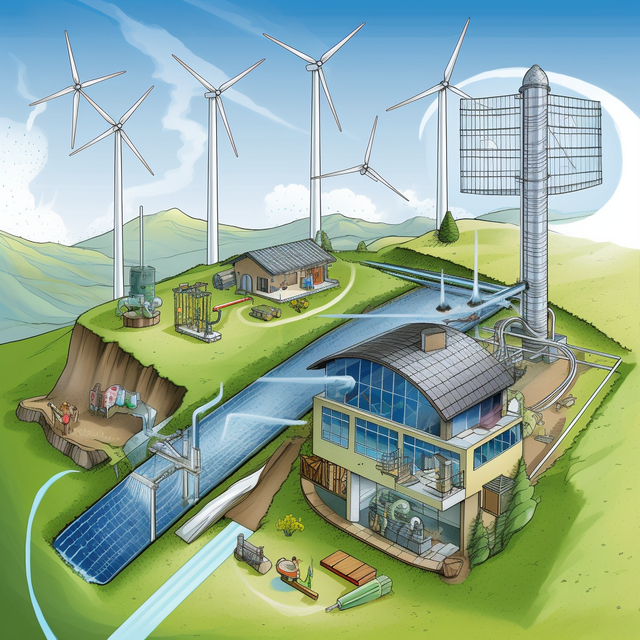Renewable Energy for Homes: A Sustainable Choice for the Future
In an age where environmental consciousness is on the rise, many homeowners are turning to renewable energy sources to power their homes. Solar, wind, and other renewable energy systems not only reduce dependency on fossil fuels but also contribute to a cleaner, greener world. As technology advances, these systems are becoming more efficient, affordable, and accessible. This article explores the benefits, types, and ways to integrate renewable energy into your home.

What is Renewable Energy for Homes?
Renewable energy refers to energy generated from natural sources that are constantly replenished, such as the sun, wind, rain, tides, geothermal heat, and biomass. Unlike conventional energy sources like coal or oil, renewable energy has a significantly lower environmental impact, reducing greenhouse gas emissions and decreasing the reliance on non-renewable resources.
When applied to homes, renewable energy systems harness these natural resources to produce electricity, heat, or both. These systems can help homeowners lower their energy bills, increase the value of their property, and contribute to a more sustainable lifestyle.
Why Choose Renewable Energy for Your Home?
1. Reduced Environmental Impact
One of the primary reasons to switch to renewable energy is its lower environmental impact. Fossil fuel-based energy generation is responsible for a large percentage of carbon emissions. By adopting solar energy, wind power, or other renewable sources, homeowners can significantly reduce their carbon footprints and contribute to mitigating climate change.
2. Lower Energy Bills
Renewable energy systems, particularly solar panels, can significantly reduce your electricity bills. Once the initial installation is complete, the energy generated from solar or wind power is essentially free, meaning you can lower your monthly utility expenses.
3. Energy Independence
Relying on renewable energy allows homeowners to be less dependent on external energy sources, like power grids and utility companies. In the event of power outages, solar energy systems with battery storage can keep your home powered, ensuring you have a continuous supply of electricity.
4. Increased Property Value
Homes equipped with renewable energy systems are highly sought after due to the long-term savings and environmental benefits they offer. Homes with solar panels or wind turbines are often valued higher than their counterparts, making the investment a wise decision for property owners.
5. Government Incentives
Many governments offer incentives, rebates, and tax credits to homeowners who invest in renewable energy systems. These financial incentives can help offset the upfront costs, making renewable energy systems more accessible and affordable.

Types of Renewable Energy for Homes
There are several renewable energy systems available for residential use. Let’s explore the most common and popular options:
1. Solar Energy
Solar panels are the most widely used form of renewable energy in residential homes. Solar energy systems capture sunlight and convert it into electricity using photovoltaic (PV) cells. These panels can be installed on rooftops or in other locations where sunlight is abundant.
- Benefits:
- Reduces electricity bills.
- Can be installed on most roofs.
- Solar panels require little maintenance.
- Can increase property value.
- Drawbacks:
- Initial installation can be costly.
- Energy production depends on weather and time of day.
- Solar panels may not be effective in regions with limited sunlight.
2. Wind Power
For homes located in areas with consistent wind, wind turbines can be an effective renewable energy solution. Wind turbines convert the kinetic energy from wind into electricity, which can then be used to power the home.
- Benefits:
- Effective in areas with strong winds.
- Reduces dependency on grid electricity.
- Low maintenance costs after installation.
- Drawbacks:
- Wind turbines require a large amount of space.
- Installation can be expensive.
- Not ideal for regions with limited wind resources.
3. Geothermal Energy
Geothermal energy systems use the heat from the Earth’s core to provide heating and cooling for homes. A geothermal heat pump circulates a fluid through underground pipes, transferring heat from the Earth to your home in winter and transferring heat from your home back into the Earth in summer.
- Benefits:
- Consistent, year-round energy source.
- Low operating costs.
- Environmentally friendly.
- Drawbacks:
- High installation costs.
- Requires suitable land for the installation of geothermal wells.
- Not all homes are ideal candidates for this system.
4. Biomass Energy
Biomass energy refers to the use of organic materials (like wood pellets, agricultural waste, or even algae) to generate heat or electricity. Biomass systems can be used to heat homes or produce hot water through the burning of organic matter.
- Benefits:
- Can be an efficient way to heat a home.
- Reduces waste by using organic materials.
- Can be used in areas without access to solar or wind energy.
- Drawbacks:
- Requires regular maintenance.
- Can be less efficient in areas where biomass resources are limited.
- Environmental concerns about air pollution from burning biomass.
5. Hydropower (Micro-Hydro)
For homes near rivers or streams, micro-hydro systems can be an excellent source of renewable energy. These systems generate electricity by harnessing the flow of water to turn turbines connected to a generator.
- Benefits:
- Provides continuous energy (as long as the water source is flowing).
- Highly efficient in areas with a constant water flow.
- Drawbacks:
- Suitable only for homes near flowing water sources.
- Can have significant environmental impacts on local ecosystems.

How to Incorporate Renewable Energy into Your Home
1. Assess Your Energy Needs
Before making any decisions, assess your current energy consumption. Identify your electricity usage patterns and determine which renewable energy sources are best suited to your needs. For instance, solar energy might be ideal for sunny areas, while wind power may be better for homes in windy locations.
2. Research Available Incentives
Check for government incentives and rebates in your area. Many countries offer programs that can help reduce the upfront costs of installing renewable energy systems. In the United States, for example, the Investment Tax Credit (ITC) allows homeowners to deduct a portion of the cost of installing solar systems from their federal taxes.
3. Hire a Professional Installer
Consult with professionals who specialize in renewable energy installations. They can assess your property, provide advice on the best system for your home, and ensure that your system is installed correctly and safely.
4. Consider Energy Storage Options
For systems like solar or wind, it’s essential to consider energy storage options such as batteries. This allows you to store excess energy produced during the day or in windy conditions, making it available for use during periods of low energy generation, such as at night.
5. Monitor and Maintain Your System
Once installed, it’s important to regularly monitor and maintain your renewable energy system to ensure optimal performance. Many solar systems, for instance, come with apps or software that allow homeowners to track energy production.
FAQs About Renewable Energy for Homes
1. How much does it cost to install renewable energy systems in homes?
The cost of installation varies depending on the type of system and the size of the home. Solar panel installations typically range from $10,000 to $30,000, while wind turbines and geothermal systems can be more expensive. However, government incentives and rebates can significantly offset the costs.
2. What are the benefits of installing solar panels on my home?
Solar panels reduce electricity bills, increase property value, and contribute to a cleaner environment. They also offer energy independence and can be combined with battery storage for power during outages.
3. Can I use renewable energy if I live in an area with limited sunlight or wind?
Yes, some systems like geothermal energy or biomass heating can be used even in areas with limited sunlight or wind. It’s important to choose the right renewable energy system based on your location and energy needs.
4. Are renewable energy systems easy to maintain?
Most renewable energy systems, like solar panels and wind turbines, require minimal maintenance. However, it’s essential to regularly inspect and clean the equipment to ensure its efficiency.
5. How do I know if my home is a good candidate for renewable energy?
Consult a professional installer who can evaluate your home’s location, energy needs, and environmental conditions to determine the best renewable energy system for your home.
Conclusion
Adopting renewable energy for your home is one of the best ways to reduce your environmental impact while saving money in the long term. Whether it’s solar panels, wind turbines, or geothermal heating, each renewable energy system offers unique benefits that can suit various needs and preferences. By choosing to integrate these energy-efficient solutions, you’re not only investing in a sustainable future for your family but also contributing to the health of the planet.
Explore more about renewable energy systems and how they can benefit your home by visiting [Energy.gov](https://www
.energy.gov/).

